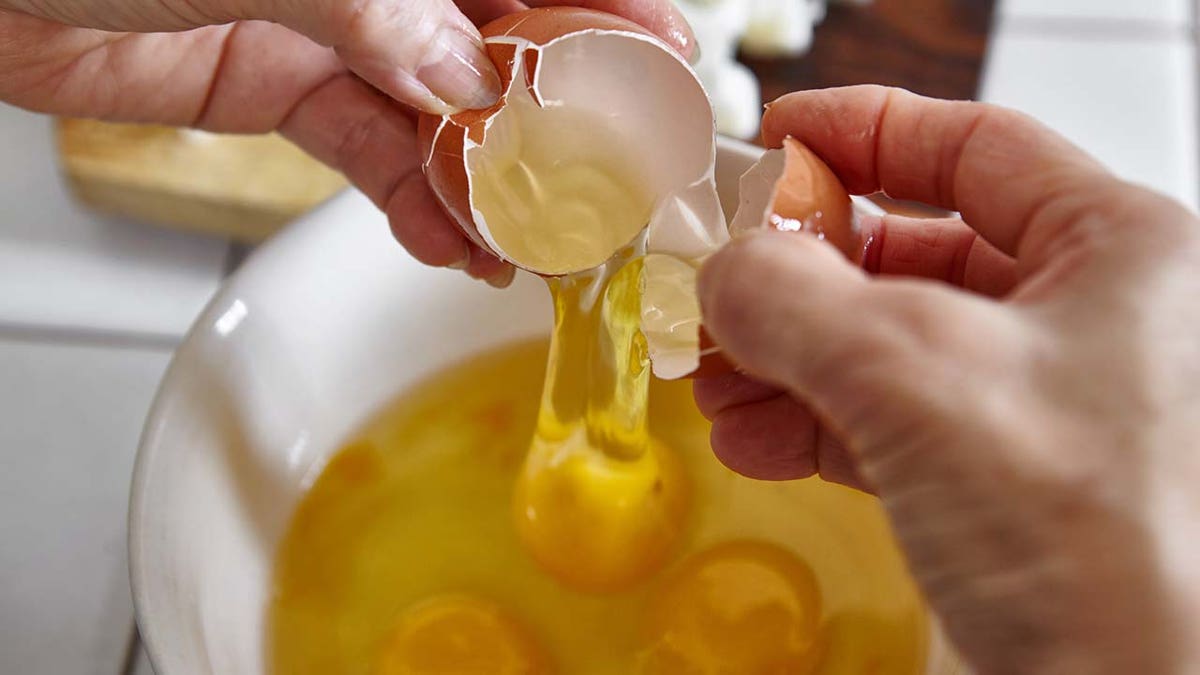Paula Deen shares her favorite recipes from her first baking cookbook
Paula Deen shows off sweet treats from her new book 'Paula Deen's Southern Baking' on 'Fox & Friends.'
We've all done it, added all the eggs at once. But does it really matter as long as they're all added?
When it comes to cakes and cookies, mixing your batter is a lot like starting a relationship. Imagine you just met the person of your dreams. What would happen if you came at them full force with everything you have to offer? Most of the time it would be a complete mess. However, if you take your time, you can create something wonderful and potentially perfect.
The same principle applies here: If you add all your eggs slowly, it will give everything a chance to get to know each other, mesh together and become one. If you add the eggs all at once, the butter-fat mixture won’t be able to absorb it all and won’t create a nice suspension.

If you add the eggs all at once, the butter-fat mixture won’t be able to absorb it all and won’t create a nice suspension. (iStock)
It’s about creating an emulsion
The reason why lies on a microscopic level. It first starts with creaming butter and sugar. If you’ve done it correctly, you’ll have a light and fluffy mixture that is pretty much all fat. Now we know fat (or oil) and water don’t mix, at least not without some effort. However, when we add the eggs to our creamed mixture, that’s exactly what we’re attempting to do. We’re trying to suspend the water in the egg into the fat, scientifically know as making an emulsion.
More From Taste of Home
Almost all of the water in the egg comes from the egg whites. While the egg yolk is mostly fat, it also has lecithin which is key to helping to create our emulsion. Without turning into a science geek, lecithin is the matchmaker that ties water and fat together, as long as you do it slowly and gently.
The result of this bad emulsion can range anywhere from cookies that spread significantly more than normal, cakes that rise lopsided or baked goods that are tough and dry.
Tips for adding eggs
Besides working slowly, there are a few more ways to successfully add eggs to your batters and doughs:
- Use room temp eggs: It’s important that your eggs are at room temperature or about 70° F. If you forgot to let your eggs warm up, place the uncracked eggs in a bowl and cover them with hot tap water for about 10 minutes.
- Make sure the eggs are large: Always use large eggs unless the recipe calls for a different size. If you use extra-large or jumbo eggs the ratio will be thrown off and you may risk breaking the emulsion.
- Whisk first: To absolutely ensure my eggs incorporate slowly, I whisk all my eggs together and then slowly drizzle it into the running mixer. I’ve found this very gradual approach really helps to create a nice emulsion. You’ll find the mixture will be thick, creamy and not curdled.
- Add a little flour: After adding the eggs, the first thing I usually try to add is part of the flour mixture. If you add your liquids first, your emulsion will break and you’ll end up with a curdled mess.

